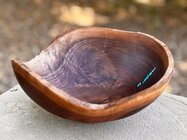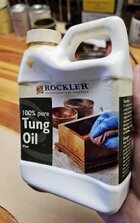Well, I know so little about finishing solvents in general that I won't speculate on them, but I've been trying to limit my exposure to them. Mineral spirits isn't a real issue for me, but within 5 minutes of using Minwax Wiping Poly and similar products from the can, I experience a physical reaction, even with good ventilation. It's weird to describe, but my lips get a bit tingly and they feel sticky like I've been eating cotton candy. It takes a good 30 minutes being outside that environmemt for the feeling to go away. (Now when I drink it over ice, I don't have that issue. Just kidding.) This is why I've just been using T&T finishes for several years now, rather than investing in respirator equipment. Xylene and toluene, I want nothing to do with being in the same room with those- headache! Maybe the issue with solvents in finishes aren't the petrochemical aromatics that do evaporate out, but rather some of the other solid chemicals that trigger the finish to cure unnaturally fast, like cobalt, or "Japan drier", which I've seen forever but have no idea what it is. Either way, I'm trying to stay away. (How about the good ol' days of white lead as a curing agent?)
I've gone through lots of pure tung oil. I was a pen turner early on and pure tung was my go-to. Then I started mixing it 1:1:1 with poly and mineral spirits, then I moved to Waterlox. (Had more Waterlox go hard in the can before finishing it than I can imagine.) Now, just T&T. This little jug of pure tung oil must be 15 years old, but it is still liquid, no gelling or solidifying. I haven't opened it for probably 10 years. For some reason the bottle is about 30% collapsed inward, like I squeezed it before sealing it, which I did not. I'm pretty sure I didn't... I think I'll keep it next to those cans of T&T on my bench in the background. May as well use it, it's nice stuff.







